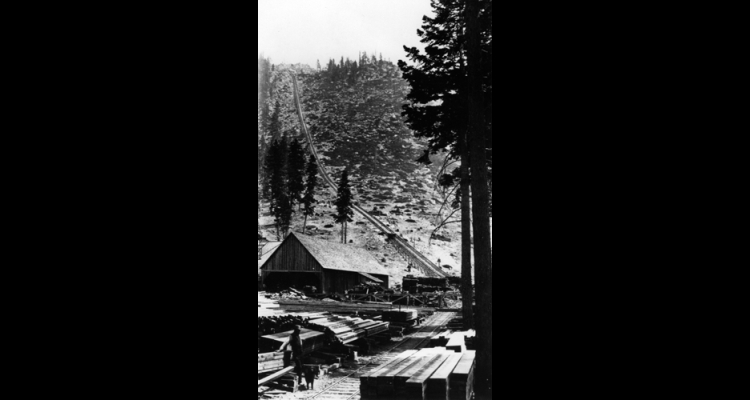Early Lumber Industry
Wood was essential to development in the nineteenth-century Great Basin. Unfortunately, forests were scarce, particularly when construction needed straight grained pines. Mines required wood for building, to fuel furnaces, and to assemble support systems underground.
Beginning in the 1860s, booming communities such as Virginia City inspired lumbering in the Sierra Nevada. W.S. Hobart and Duane L. Bliss established lumber-cutting empires that, by 1880, produced nearly six hundred million feet of lumber and two million cords of firewood. Philipp Deidesheimer, a Comstock mining engineer, exacerbated the problem with his 1860 invention of the square-set system, which dramatically increased demand for timber.
Glenbrook, a milling station on Lake Tahoe's east shore, processed tens of thousands of trees. Archaeologists have identified other nineteenth-century lumber camps throughout the Sierra Nevada together with systems of roads, flumes, and narrow-gauge railroad right-of-ways used to transport logs. Chinese and European Americans, including French Canadians, each had their own camps.
Although some old growth stands survived in the Tahoe Basin, the environmental impact of lumbering persists since single species of pine tended to grow in clear-cut areas. While an original forest reacts in diverse ways to weather extremes or pests, trees of the same species respond similarly to change, leading to widespread die-offs.
Article Locations
Related Articles
Further Reading
None at this time.





